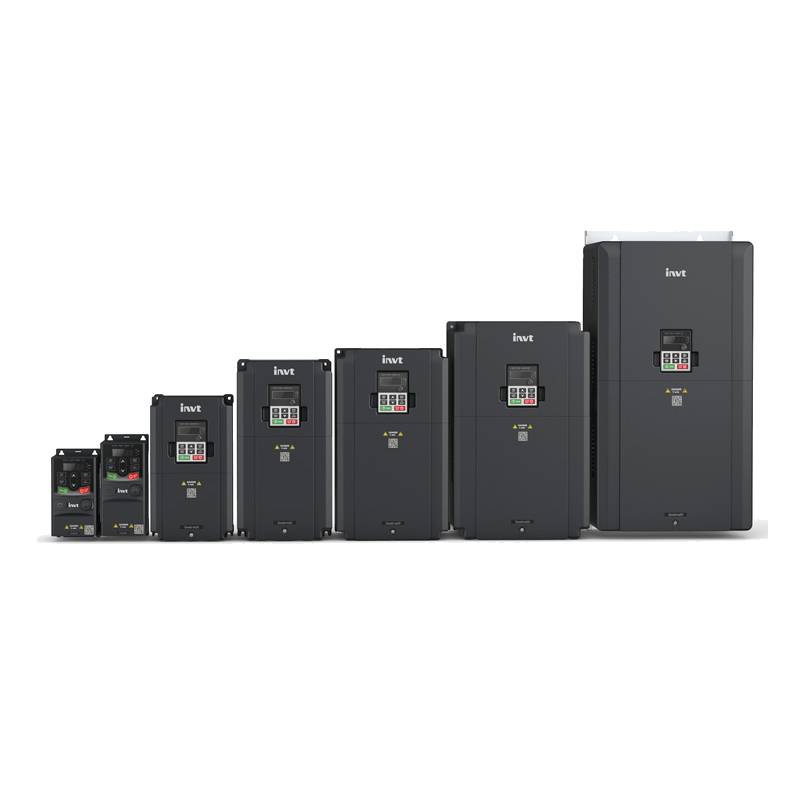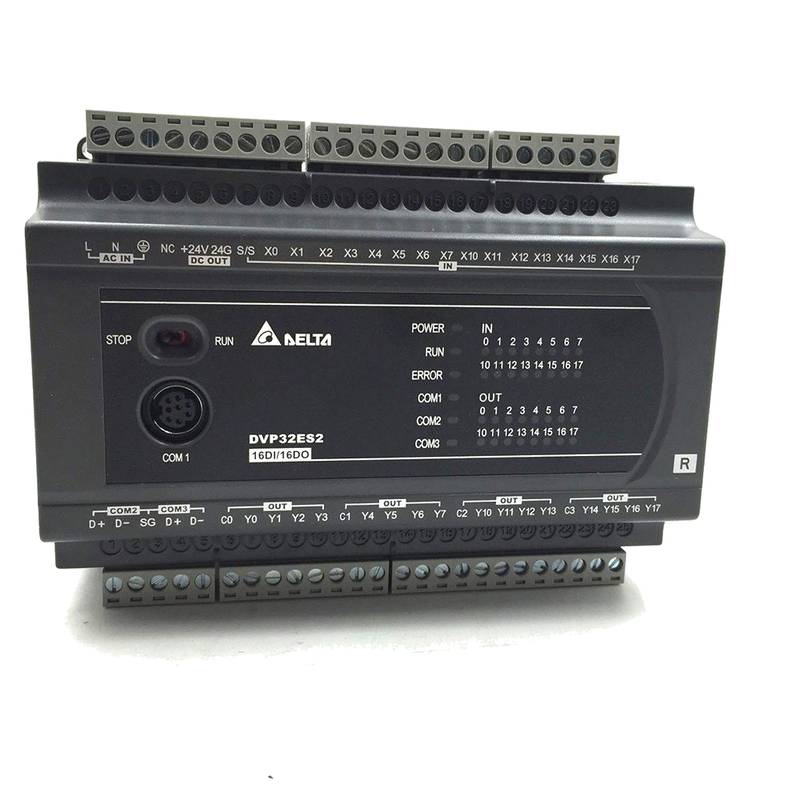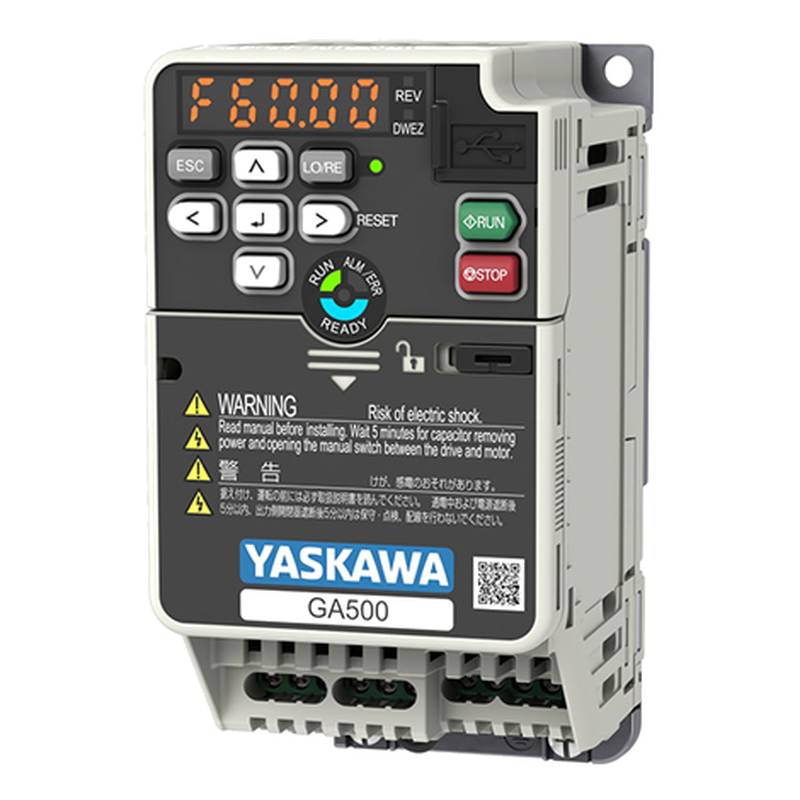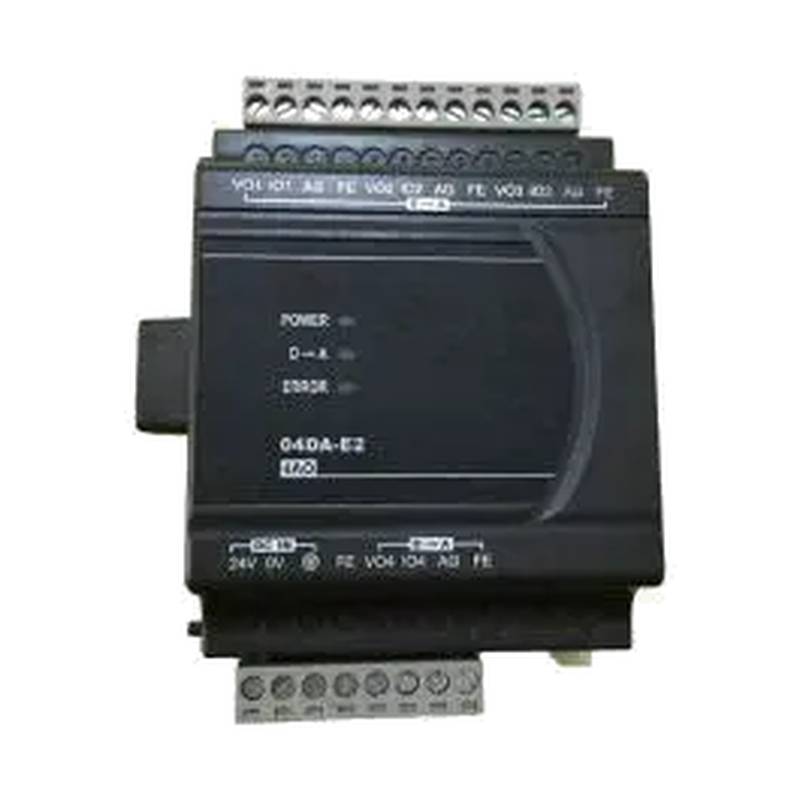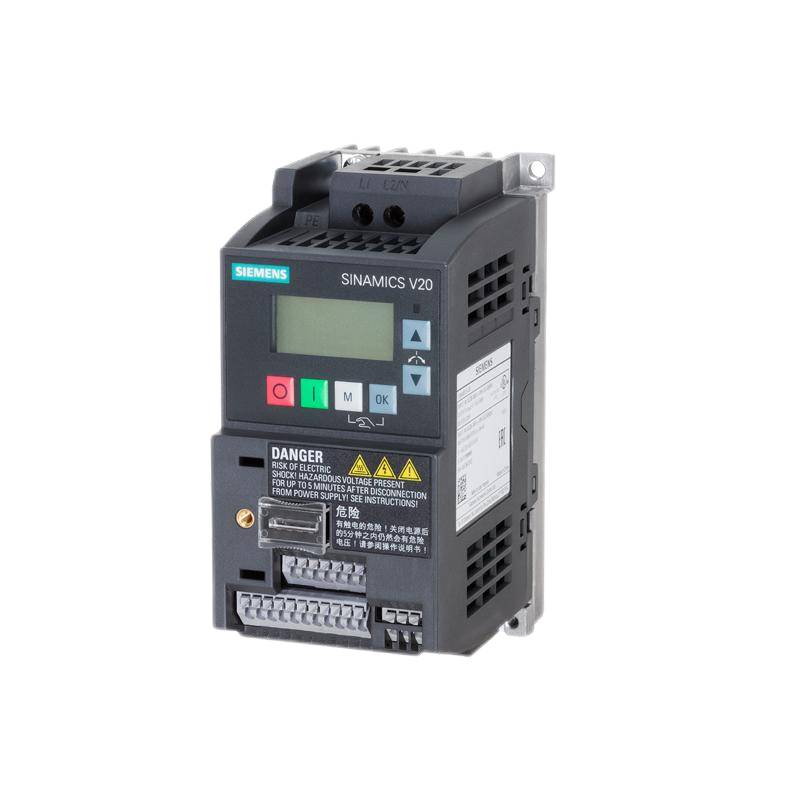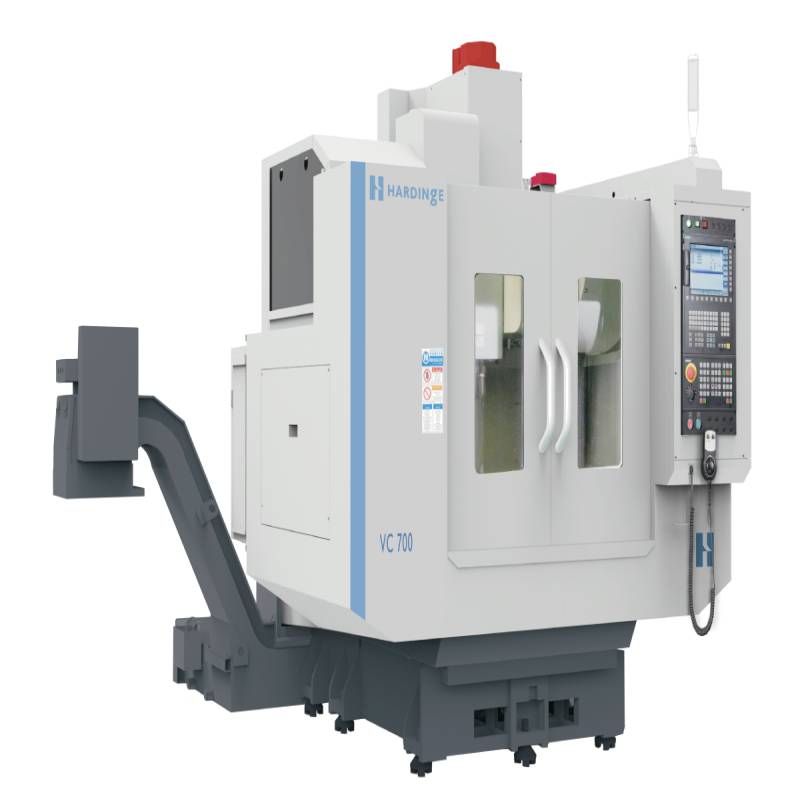
The YASKAWA HB4A0031FBC H1000 is a high-reliability frequency controller converter engineered for demanding industrial applications, boasting a robust 27A current rating and 11kW power output. This advanced drive excels in providing precise motor control, exceptional energy efficiency, and unparalleled operational stability, making it a superior choice for optimizing machinery performance. Its core advantages lie in its advanced control algorithms, robust construction for extended lifespan, and comprehensive protection features, ensuring seamless operation even in harsh environments.
Product Specifications
| Feature | Specification |
| :---------------------- | :---------------------------------- |
| Model | HB4A0031FBC H1000 |
| Rated Current | 27A |
| Rated Power | 11kW |
| Input Voltage | [Data Not Found in Search Results] |
| Output Voltage | [Data Not Found in Search Results] |
| Control Method | [Data Not Found in Search Results] |
| Protection Features | [Data Not Found in Search Results] |
| Communication Options | [Data Not Found in Search Results] |
Core Features & Market Positioning
The YASKAWA HB4A0031FBC H1000 distinguishes itself through its "H1000" designation, signifying Yaskawa's commitment to high reliability, a critical factor in minimizing downtime and maintenance costs across various industrial sectors. This frequency converter incorporates advanced vector control technology, enabling superior torque response and speed accuracy, which is essential for applications requiring precise motion management. Its market positioning is firmly in the premium segment, targeting industries where performance consistency, energy savings, and long-term operational integrity are paramount. The robust design and built-in diagnostics contribute to its reputation for longevity and reduced total cost of ownership compared to less specialized VFDs.
Key Application Scenarios
This YASKAWA H1000 frequency converter is ideally suited for a wide array of applications where precise speed and torque control are critical. It finds extensive use in pump and fan applications for HVAC systems, offering significant energy savings through variable speed operation. In material handling systems, such as conveyors and automated storage, its accurate speed regulation ensures smooth product movement and process efficiency. Manufacturing environments benefit from its application in machine tools, textile machinery, and packaging equipment, where maintaining consistent operating parameters is crucial for product quality and throughput. The HB4A0031FBC H1000 is also a robust choice for general industrial machinery requiring reliable and efficient motor speed adjustment.
Practical System Integration Guidance
Integrating the YASKAWA HB4A0031FBC H1000 into existing industrial systems involves careful attention to electrical connections and parameter configuration. Proper wiring, adhering to local electrical codes and Yaskawa's installation manual, is paramount for safety and performance. For installation, ensure adequate ventilation and environmental conditions as specified by the manufacturer to prevent overheating. Initial commissioning typically requires setting basic motor parameters, such as rated voltage, current, and frequency, along with desired control modes (e.g., V/f or closed-loop vector control). Advanced parameter adjustments, including acceleration/deceleration times, speed limits, and I/O assignments, can be accessed via the integrated keypad or optional programming software, allowing for fine-tuning to specific application requirements.
Operation and Risk Mitigation
Safe operation of the YASKAWA HB4A0031FBC H1000 frequency converter necessitates strict adherence to safety protocols. Always ensure the unit is de-energized and locked out before performing any maintenance or wiring. Familiarize yourself with the unit's fault codes, which provide critical diagnostic information for troubleshooting. Common fault codes relate to overcurrent, overvoltage, undervoltage, and motor overload conditions, each indicating a specific issue that requires investigation. Implementing proper motor protection, such as thermal overload relays if not fully managed by the VFD, and surge protection devices can further mitigate risks and prolong the converter's lifespan. Regular inspection of connections and cooling fins is also recommended.
Scalability & Long-Term Value
The YASKAWA HB4A0031FBC H1000 offers significant long-term value through its robust design and potential for integration into evolving industrial automation landscapes. While direct "scalability" in terms of hardware upgrades for a single unit is limited, its compatibility with Yaskawa's broader product ecosystem and communication protocols (e.g., Modbus, EtherNet/IP, Profibus, depending on installed options) allows for seamless integration into larger, networked systems. This facilitates centralized monitoring and control, crucial for Industry 4.0 initiatives. Furthermore, the inherent reliability and energy efficiency contribute to a reduced total cost of ownership over the product's extended operational life, providing a sound return on investment.
Frequently Asked Questions
What is the primary function of the YASKAWA HB4A0031FBC H1000?
The YASKAWA HB4A0031FBC H1000 is a variable frequency drive (VFD). It precisely controls the speed of AC induction motors. This allows for optimized performance and energy savings.
It achieves this by converting fixed frequency and voltage AC power. It then outputs variable frequency and voltage power. This enables gradual motor speed adjustments.
This VFD is crucial for applications needing precise motor control. It enhances efficiency in pumps, fans, and conveyors.
What are the key advantages of using the YASKAWA H1000 series?
The H1000 series emphasizes high reliability. This reduces unexpected downtime in critical operations. It offers advanced control algorithms for superior motor performance.
Energy efficiency is a significant advantage. By matching motor speed to load demand, it minimizes power consumption. This leads to substantial operational cost reductions.
The robust construction ensures longevity. It is designed for harsh industrial environments. It also features comprehensive protection mechanisms.
Can the YASKAWA HB4A0031FBC H1000 be used with single-phase motors?
This specific model, HB4A0031FBC H1000, is typically designed for three-phase motor control. Its 27A rating and 11kW power output suggest a three-phase output.
Single-phase motor control usually requires specialized VFDs. These have different internal configurations. Always verify motor type compatibility.
Consult the product manual for definitive motor type support. Incorrect pairing can lead to damage or malfunction.
What is the typical input voltage range for this converter?
Detailed input voltage specifications were not readily available. However, industrial VFDs of this power rating commonly operate on three-phase mains power.
Common input voltage configurations include 200-240V or 380-480V. The exact range is model-specific.
Refer to the official Yaskawa documentation for precise input voltage requirements. This ensures safe and correct installation.
How does the H1000 series differ from other Yaskawa drives?
The "H1000" designation points to Yaskawa's focus on high reliability. This often translates to enhanced component quality and design. It's positioned for demanding, continuous-duty applications.
It likely incorporates advanced control features. These might include improved vector control or specialized application functions. This differentiates it from more basic V/f control drives.
The specific model number, HB4A0031FBC, denotes its unique configuration. This includes its current rating, enclosure type, and any specific options.
What are common applications for the YASKAWA HB4A0031FBC H1000?
This VFD is ideal for industrial pumps and fans. It provides efficient speed control for HVAC systems. It optimizes water pressure and airflow.
Material handling equipment benefits greatly. Conveyors and elevators use it for smooth acceleration. It ensures precise load movement.
It's also suitable for machine tools. Packaging machinery and textile equipment gain performance. It enables precise speed and torque regulation.
How is system integration typically performed?
System integration involves proper electrical wiring. Follow Yaskawa's installation manual closely. Ensure compliance with all safety standards.
Parameter configuration is key. Set motor data, control mode, and I/O assignments. Use the HMI or software for adjustments.
Verify all connections before powering up. Test functionality under controlled conditions. This ensures safe and optimal operation.
What safety precautions should be observed during operation?
Always ensure proper grounding. Never operate the drive without a properly connected motor. Be aware of the high voltages present.
De-energize and lockout/tagout before maintenance. Install appropriate protective devices. This includes fuses or circuit breakers.
Follow manufacturer safety guidelines strictly. Understand the emergency stop procedures. Ensure personnel are trained on safe operation.
What is the role of fault codes in troubleshooting?
Fault codes are essential diagnostic indicators. They pinpoint specific issues within the drive or connected motor. This significantly speeds up troubleshooting.
Common codes relate to overcurrent, overvoltage, or motor faults. Each code requires a specific diagnostic approach. The manual lists code meanings and solutions.
By understanding fault codes, technicians can address problems efficiently. This minimizes downtime and prevents further damage.
How does this drive contribute to long-term value?
Its high reliability minimizes repair costs. Extended operational lifespan reduces replacement frequency. Energy savings directly impact operational expenditure.
Compatibility with network protocols enables integration. This supports smart factory initiatives. It allows for remote monitoring and control.
The precise control capabilities improve product quality. This reduces scrap and rework. It offers a strong return on investment.

















